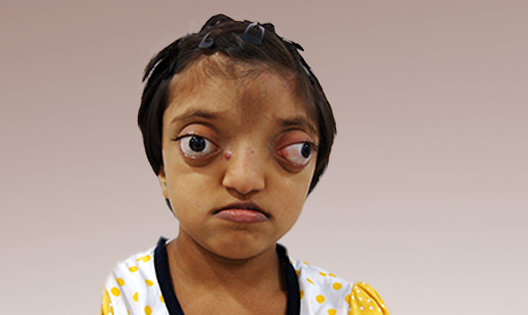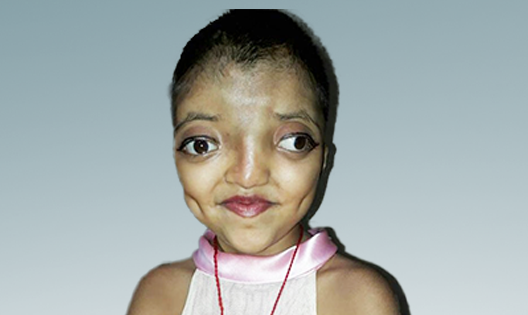- 000 - 123 - 456789
- [email protected]
- No: 58 A, East Madison Street, Baltimore, MD, USA 4508


An exclusive guide on syndromic craniofacial anomalies has been developed by a renowned specialist from Bangalore, Karnataka, Dr. Krishna Shama Rao. These anomalies are highly complex issues that require comprehensive insights into each condition and a thorough understanding of their treatment. Dr. Rao provides modern treatment methods aimed at meeting the specific requirements of individuals who seek to achieve their goals swiftly and effectively. Prepare for transformative changes, as these operations not only alter your physical appearance but also enhance your mental well-being, making you feel more confident than ever. Gain knowledge about new ways of treating craniofacial diseases and disorders, ensuring radiant health transformation along with improved quality of life.
Syndromic craniofacial anomalies represent a range of genetic disorders that significantly affect the growth and structure of the skull and facial features. Often caused by mutations in specific genes, these head abnormalities manifest in various ways, impacting not only physical appearance but also overall health and function.


Crouzon Syndrome is a distinct condition in craniosynostosis, characterized by the premature fusion of fibrous joints (sutures) in the skull. This early fusion disrupts normal skull growth, resulting in distinctive head abnormalities such as shallow eye sockets, a prominent forehead, and midface hypoplasia. Additionally, individuals with Crouzon Syndrome may experience vision problems, dental issues, and hearing loss due to these head abnormalities.
Apert Syndrome involves the premature fusion of specific cranial bones, affecting the skull, hands, and feet. This combination results in unique head abnormalities such as skull defects, syndactyly (fusion of fingers and toes), and midface retrusion. Patients with Apert Syndrome may also face challenges with vision, breathing, and hand and foot function due to these head abnormalities.
Hemifacial microsomia is a congenital condition where one side of the face is underdeveloped compared to the other. This asymmetry in head abnormalities often affects the ears, jaws, and cheekbones, leading to hearing impairments, dental anomalies, and speech disorders.
Pierre Robin Syndrome is a rare congenital condition with head abnormalities including micrognathia (small jaw), glossoptosis (retracted tongue), and respiratory distress with or without cleft palate. These abnormalities lead to respiratory problems, feeding complications, and potential developmental delays, necessitating early intervention and specialized management.
Treacher-Collins Syndrome affects the development of facial bones, particularly the lower jaw and cheek bones, leading to underdeveloped cheekbones and a small jaw. These head abnormalities can cause breathing difficulties, failure to thrive, feeding problems, and hearing loss apart from cosmetic deformities.
Craniosynostosis is characterized by the premature fusion of skull sutures, leading to abnormal skull shape and potential neurological issues. Dr. Rao specializes in both classical open surgery and endoscopic-assisted surgery with helmet therapy to correct these head abnormalities and promote healthy cranial growth.
Cleft lip and palate are visible gaps in the lip and/or palate resulting from incomplete tissue fusion during fetal development. These head abnormalities can significantly impact speech development, feeding, dental health, and psychosocial well-being.
Tessier Clefts are rare clefts which can occur the face involving not only the soft tissue of the face, eyes and forehead but also the bones underneath leading to severe deformities including hypertelorism.
Preparing for surgery involves comprehensive pre-surgery evaluations and consultations. Dr. Krishna Shama Rao ensures patients and their families are fully informed about the entire process, including pre-operative instructions, probable outcomes, and post-operative care. Emotional support is provided throughout the surgical journey, making sure patients feel comfortable and confident.
Preparing for surgery involves comprehensive pre-surgery evaluations and consultations. Dr. Krishna Shama Rao ensures patients and their families are fully informed about the entire process, including pre-operative instructions, probable outcomes, and post-operative care. Emotional support is provided throughout the surgical journey, making sure patients feel comfortable and confident.

Correcting head abnormalities through cosmetic surgery can significantly improve facial symmetry and balance, resulting in a more natural and aesthetically pleasing appearance.

Surgical interventions can correct malocclusions and other functional issues, enhancing chewing, swallowing, and speech abilities.

Surgery to correct nasal blockages or other deformities helps in improving breathing, thereby preventing respiratory infections and conditions like obstructive sleep apnea.

A normal appearance post-surgery can greatly enhance self-esteem and confidence, allowing individuals to engage socially and perform daily activities with greater ease.

Addressing head abnormalities reduces the risk of associated health issues such as ear infections, dental problems, and breathing difficulties.

Comprehensive treatment of syndromic craniofacial anomalies offers transformative benefits, empowering individuals to lead satisfying and healthy lives.
Dr. Krishna Shama Rao stands at the forefront of treating Syndromic Craniofacial Anomalies, offering hope and transformation to those affected by these complex head abnormalities. His advanced surgical techniques and compassionate care ensure that patients achieve not only physical improvements but also enhanced mental well-being and confidence. Trust Dr. Rao to guide you through the journey of correcting head abnormalities and experience a significant improvement in your quality of life.